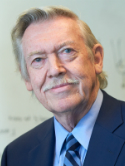| Abstract: |
There is excitement generated almost daily about the possible uses of stem cells to treat human disease. Much of the interest of late is generated by embryonic stem cells (ESCs). As exciting as ESCs may be, they are quite controversial for moral reasons, given their source. They are also scientifically controversial since they are much less well understood than the original, long-standing, and clinically successful hematopoietic stem cell (HSC). HSCs have the distinct advantage of being reasonably well characterized and have been proven in the clinic. They can be isolated by simple procedures directly from the bone marrow or from peripheral blood after being stimulated (mobilized). They can then be manipulated and delivered to a patient, often producing a cure. Their biology provides the paradigm by which all other stem cells are judged, and they have little in the way of moral controversy surrounding them given they are isolated from adults who have consented to the procedure. Another putative stem cell has gained momentum in the last few years; the mesenchymal stem cell (MSC). MSCs appear to have much in common with HSCs. They were originally characterized from bone marrow, are capable of differentiating along multiple lineages and, at least in vitro, have significant expansion capability. Unlike HSCs, they have not yet been definitively shown to function as stem cells, despite their ability to differentiate into various mesenchymal cell types under the right culture conditions. Still, there is mounting evidence these cells may be useful, if not as true stem cells then at least as vehicles for emerging cell and gene therapies, especially in the field of tissue engineering. While this is an important endpoint, it is more important to thoroughly understand stem cell biology. That understanding can then be applied toward the ultimate goal of using these cells not just for various forms of therapy, but rather as a tool to discover the mechanisms and means to bring about directed repair and regeneration of damaged or diseased tissues and organs. The excitement of HSCs and MSCs has been muted somewhat by the excitement surrounding ESCs, primarily due to the fact HSCs and MSCs are viewed as limited to specific cell types while ESCs could potentially be applied to any cell type. Recent information indicates HSCs, MSCs, and other cells in general may have more universal differentiation abilities than previously thought. © 2002 Wiley-Liss, Inc. |



